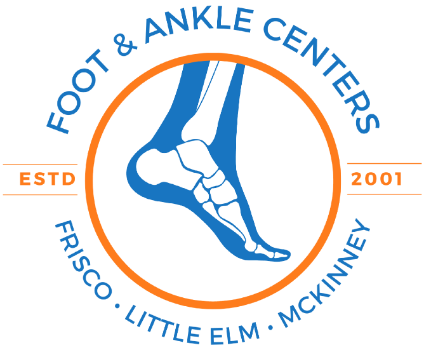Advanced Foot & Ankle Imaging Services | Foot & Ankle Centers
Saturday, August 09, 2025 | By: Foot & Ankle Centers of Frisco, Little Elm, McKinney
Did you know misdiagnosis can lead to prolonged pain and unnecessary treatments? For foot and ankle issues, an accurate diagnosis is essential to effective care and faster recovery.
Pain in these areas can result from injuries, overuse, or underlying conditions. Due to the complexity of foot and ankle structures, identifying the exact cause can be challenging—but getting it right matters. A wrong diagnosis can lead to ineffective treatments and longer healing times.
In this blog post, we’ll look at how advanced imaging and diagnostic tools improve accuracy and support personalized treatment plans—helping you get back on your feet, sooner and stronger.
The Role of Imaging in Diagnosis
Imaging plays a pivotal role in the diagnosis of foot and ankle pain. It allows our podiatrists at Foot & Ankle Centers to view the internal structures of a patient's foot and ankle without invasive procedures. Imaging helps in visualizing fractures, soft tissue injuries, and even bone malformations that might not be visible during a physical examination alone.
Types of Advanced Imaging Techniques
There are several advanced imaging techniques used for diagnosing foot and ankle issues. Below are some methods used at Foot & Ankle Centers:
1. Digital X-Rays
Digital X-rays are the most common imaging method used for diagnosing foot and ankle problems. They provide a quick view of bones and joints and can highlight fractures, dislocations, and signs of arthritis.
2. MRI (Magnetic Resonance Imaging)
MRI scans utilize powerful magnets and radio waves to produce detailed images of soft tissues, including ligaments, tendons, and muscles. They are particularly useful for diagnosing soft tissue injuries that are not visible on X-rays.
3. Weight-Bearing 3D CT Scans
Unlike traditional CT scans, weight-bearing 3D CT scans allow patients to stand during the procedure, which provides a more accurate representation of the foot and ankle under pressure. This technique is essential for diagnosing conditions such as flatfoot or other deformities.
Why Choose Advanced Imaging?
Advanced imaging technologies are essential for several reasons:
- Precision: They provide detailed images that allow for more accurate diagnosis.
- Early Intervention: Early detection often leads to better treatment outcomes. Conditions that might progress without treatment can be addressed sooner, improving recovery rates.
- Customized Treatment Plans: Having precise data from imaging results allows podiatrists to develop personalized treatment plans tailored to the specific needs of their patients.
The Impact of Delayed Diagnosis
Ignorance of persistent foot and ankle pain can lead to excruciating consequences. Delayed diagnosis due to insufficient imaging or misinterpretation may result in:
- Progressive damage to cartilage, tendons, or ligaments
- Increased pain intensity and frequency
- Higher chances of surgical intervention in later stages
- Longer recovery times and higher healthcare costs
How Advanced Imaging Works
Let’s break down the process of how advanced imaging works:
1. Initial Consultation: The patient visits a podiatrist, such as those at Foot & Ankle Centers, who evaluates the symptoms, health history, and medical history to determine the need for imaging.
2. Imaging Order: Based on the assessment, the podiatrist will order the appropriate imaging tests.
3. Performing the Imaging: At Foot & Ankle Centers each location has state of the art diagnostic equipment so we can provide in-house testing.
4. Interpreting Results: A specialist reviews the images and collaborates with the podiatrist to determine the diagnosis.
5. Creating a Treatment Plan: Based on the diagnosis, the podiatrist formulates a personalized treatment plan that may include physical therapy, medication, orthotics, or surgery.
The Benefits of Being Proactive
Seeking medical advice at the first signs of foot or ankle pain provides numerous advantages:
- Early Diagnosis Equals Better Results: Early detection ensures that diseases like arthritis do not worsen and become harder to manage.
- Avoid Long-term Consequences: Conditions left untreated can lead to permanent damage and lifelong consequences, including chronic pain and disability.
- Improve Quality of Life: By addressing problems promptly, patients can maintain a more active lifestyle, reduce pain, and improve mobility.
Common Foot and Ankle Conditions Detected by Imaging
Many conditions can be diagnosed effectively through advanced imaging, including:
- Fractures (stress fractures, bone fractures)
- Ligament injuries (like ankle sprains)
- Tendon injuries (like Achilles tendinitis)
- Arthritis (both osteoarthritis and rheumatoid arthritis)
- Lisfranc injury (a specific type of foot injury)
- Flatfoot or other structural deformities
Where Do We Go From Here?
At Foot & Ankle Centers—serving Frisco, Little Elm, and McKinney—Dr. Knapp, Dr. Tavakoli, and Dr. Treleven utilize advanced imaging technologies to accurately diagnose foot and ankle conditions and deliver targeted, effective treatment plans. By combining their expertise with state-of-the-art tools, they help patients avoid unnecessary procedures, reduce the risk of complications, and achieve faster, more complete recoveries. Whether you're dealing with chronic pain or a recent injury, trust our team to help you take the right steps toward lasting relief and a healthier, more active life.


Leave a comment
0 Comments